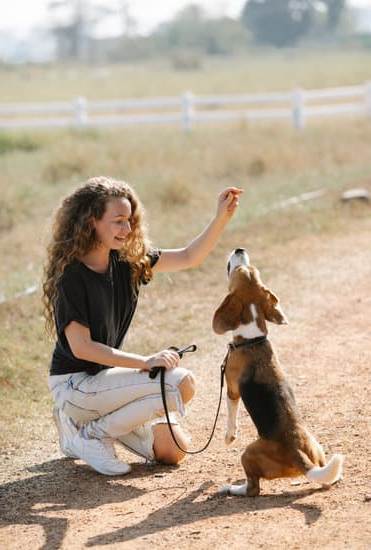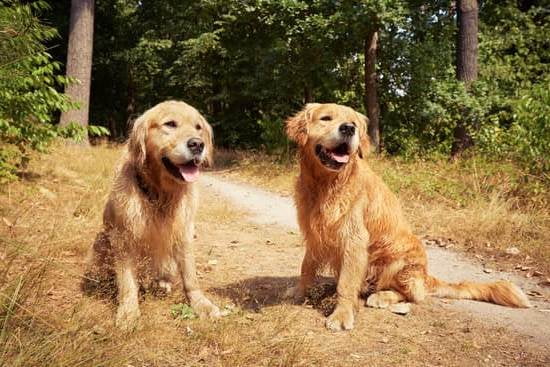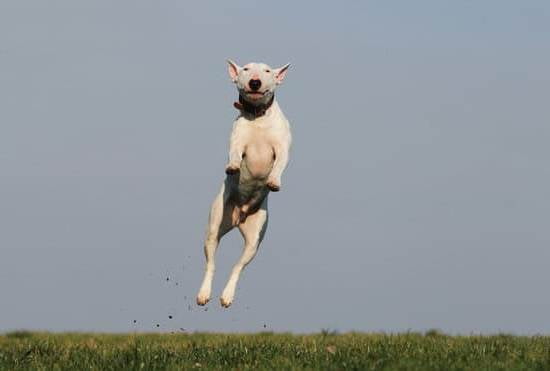Are you wondering how to litter train your dog? Litter training can be a convenient and effective solution for pet owners, offering numerous benefits for both you and your furry friend. From maintaining a clean and odor-free living space to providing a comfortable and reliable bathroom option for your dog, litter training can significantly improve the quality of life for both you and your pet.
In this article, we will explore the ins and outs of litter training for dogs, offering valuable insights into choosing the right litter box, getting your dog acquainted with the new setup, understanding their bathroom habits, troubleshooting common issues, and transitioning to outdoor potty training. By understanding the benefits of litter training and implementing the right techniques, you can set your dog up for successful and stress-free bathroom habits.
Throughout this comprehensive guide, we will provide practical tips and step-by-step instructions to help you navigate the process of litter training with confidence. Whether you’re a new pet owner looking for guidance or an experienced dog parent seeking to improve your current methods, this article will offer valuable insights into creating a positive litter training experience for both you and your canine companion. So let’s dive in and explore the world of litter training.
Choosing the Right Litter Box for Your Dog
When it comes to litter training your dog, one of the most crucial decisions you’ll make is choosing the right litter box. The size, material, and placement of the litter box can significantly impact your dog’s success in using it consistently.
Size Matters
When selecting a litter box for your dog, size definitely matters. You’ll want to choose a box that is large enough for your dog to comfortably turn around in and squat to do their business. Consider the size of your dog when making this decision, as well as the amount of space you have available in your home.
Material Selection
The type of material you choose for your dog’s litter box is also important. Some dogs may prefer a certain type of material over another, so it might take some trial and error to find the right fit for your furry friend. Common materials for litter boxes include plastic, metal, or even wood. Some dogs may have sensitivities to certain materials, so keep an eye on their behavior and comfort level when introducing them to a new litter box.
Strategic Placement
Where you place the litter box in your home can also impact your dog’s willingness to use it. Choose a quiet and accessible location that offers some degree of privacy for your pet. Avoid placing the litter box near their feeding area or in high-traffic areas where they may feel uncomfortable or distracted.
By taking careful consideration of the size, material, and placement of your dog’s litter box, you can set them up for success in their litter training journey. Remember that patience and positive reinforcement are key components in helping them adjust to their new bathroom routine.
Getting Your Dog Acquainted With the Litter Box
When it comes to litter training your dog, getting them acquainted with the litter box is a crucial step in the process. Here are some tips and techniques to help make this transition as smooth as possible:
- Start by choosing the right type of litter box for your dog. Consider the size of your dog and choose a litter box that is large enough for them to comfortably turn around and move inside.
The material of the litter box is also important – consider options such as plastic or stainless steel which are easy to clean. Additionally, ensure that you place the litter box in a quiet and accessible area of your home to encourage your dog to use it. - Introduce your dog to the litter box gradually. Bring them to the litter box several times throughout the day, especially after meals or naps. Encourage them to explore the box by using positive reinforcement such as treats or praise. It’s important to make this experience as positive as possible for your dog.
- Be patient and consistent during this training process. If your dog shows hesitation or resistance towards using the litter box, avoid scolding them. Instead, continue to encourage and motivate them with positive reinforcement. Consistency is key in helping your dog understand that the litter box is their designated potty area.
By following these tips and techniques, you can help your dog become acquainted with the litter box in a positive way, making the overall training process much smoother for both you and your pet.
Understanding Your Dog’s Bathroom Habits
When it comes to litter training your dog, understanding their bathroom habits is crucial for a successful training process. Just like humans, dogs also have specific times when they need to relieve themselves. Establishing a routine for your dog’s bathroom breaks can significantly aid in their litter training journey.
Here are some important points to consider when establishing a routine for your dog’s bathroom habits:
- Consistency is key: Dogs thrive on routine and predictability. Set specific times for bathroom breaks, such as first thing in the morning, after meals, and before bedtime.
- Pay attention to cues: Watch for signs that your dog needs to go potty, such as pacing, sniffing around, or circling a particular spot. Recognizing these cues can help you anticipate when your dog needs to use the litter box.
- Positive reinforcement: When your dog uses the litter box at the designated times, be sure to offer plenty of praise and maybe even a small treat. This positive reinforcement will reinforce the desired behavior and encourage your dog to continue using the litter box.
By establishing a consistent routine and paying attention to your dog’s bathroom habits, you can set them up for success in their litter training journey.
Remember that every dog is different, so it may take some trial and error to find the right routine that works for your pet. Be patient and consistent, and you’ll soon see progress in their litter training efforts.
Addressing Challenges and Setbacks
Recognizing Common Litter Training Issues
When litter training your dog, it’s important to be aware of the common challenges and setbacks that may arise. Some of these issues include your dog refusing to use the litter box, having accidents outside of the designated area, or showing signs of anxiety or stress related to the litter training process. Recognizing these issues early on will allow you to address them promptly and work towards a solution.
Strategies for Overcoming Setbacks
To troubleshoot common litter training issues, it’s essential to remain patient and consistent in your approach. If your dog is avoiding the litter box, try placing their food or toys near the box to create positive associations.
Additionally, consider adjusting the placement of the litter box to a more accessible or private area in your home. When accidents occur outside of the designated area, it’s important not to scold your dog but instead redirect them to the correct spot and thoroughly clean any soiled areas to eliminate lingering odors.
Seeking Professional Assistance
In some cases, addressing challenges and setbacks in litter training may require professional assistance from a veterinarian or certified dog trainer. If you’ve exhausted various strategies without success, don’t hesitate to seek guidance from experts who can provide tailored solutions for your specific situation.
Remember that every dog is unique, and what works for one may not necessarily work for another. By seeking professional help when needed, you can ensure that your dog receives the support they need to successfully adapt to litter training.
Maintaining a Clean and Odor-Free Litter Box
Once you have successfully litter trained your dog, it is essential to ensure that the litter box remains clean and odor-free. Regular upkeep and hygiene are crucial not only for your dog’s comfort but also for maintaining a healthy living environment in your home.
One of the most important aspects of maintaining a clean litter box is scooping it at least once a day. This will help remove waste and prevent the buildup of odors. Additionally, completely changing the litter and cleaning the box every 1-2 weeks is recommended. Use mild soap and warm water to clean the litter box thoroughly, ensuring that no lingering odors remain.
In addition to regular scooping and cleaning, choosing the right type of litter is also important in keeping the litter box odor-free. There are various options available, including clay-based, silica gel crystals, recycled paper, and more. It’s important to find a litter that effectively absorbs odor while being safe for your dog. Understanding your dog’s preferences can also help in choosing the right type of litter for maintaining a clean and odor-free environment.
| Tip | Description |
|---|---|
| Scoop Daily | Remove waste daily to prevent odor buildup |
| Clean Periodically | Thoroughly clean the entire litter box every 1-2 weeks |
| Choose the Right Litter Type | Select a litter that effectively absorbs odors while being safe for your dog |
Transitioning From Litter to Outdoor Potty Training
As your dog becomes more accustomed to using the litter box for their bathroom needs, you may eventually want to transition them to outdoor potty training. This can be a gradual process that requires patience and consistency. One of the first steps in this transition is to gradually move the litter box closer to the door that leads outside. This will help your dog associate going to the bathroom with being outdoors.
Once your dog is comfortable with the litter box being near the door, you can start taking them outside on a regular schedule, such as after meals or first thing in the morning. Encouraging them to use the bathroom outside by using verbal cues or providing treats as positive reinforcement can also help them make the connection between outdoor potty training and positive experiences.
Another important aspect of transitioning from litter to outdoor potty training is supervising your dog closely while they are outside. This means keeping an eye on them and providing gentle guidance if necessary. It’s important to praise and reward your dog when they successfully go to the bathroom outside, which will reinforce this behavior and encourage them to continue doing so in the future.
Conclusion
In conclusion, litter training your dog can be a rewarding and beneficial experience for both you and your pet. By taking the time to understand the benefits of litter training, choosing the right litter box, and getting your dog acquainted with it through training and routine establishment, you are setting your dog up for success in maintaining good bathroom habits.
It is important to remember that addressing challenges and setbacks is part of the process, but with patience and troubleshooting techniques, you can overcome these obstacles.
As you celebrate your dog’s successful litter training journey, you can enjoy the convenience of having a clean and odor-free living space. Additionally, litter training provides a great option for dogs who live in apartments or homes without easily accessible outdoor spaces. Not only does it benefit you by providing a cleaner environment, but it also benefits your dog by giving them an appropriate indoor bathroom solution.
Furthermore, as you continue to maintain a clean and odor-free litter box for your dog, you are ensuring their comfort and hygiene. Transitioning from litter to outdoor potty training can also be a smooth process with gradual steps.
By celebrating your dog’s successful litter training journey, you are establishing a strong bond with your pet based on trust and positive reinforcement. Overall, the benefits of litter training for both you and your pet make it a valuable investment in their overall well-being.
Frequently Asked Questions
How Long Does It Take to Potty Train a Dog?
The length of time it takes to potty train a dog can vary depending on factors such as the dog’s age, breed, and previous training. Some dogs may pick up on the potty training process in a few weeks, while others may take several months. Consistency, patience, and positive reinforcement are key elements in successfully potty training a dog.
How Do You Stop a Dog From Peeing and Pooping in the House?
Stopping a dog from peeing and pooping in the house involves identifying the underlying cause of the behavior. It could be due to lack of proper potty training, anxiety, medical issues, territorial marking, or other reasons.
Addressing the issue may involve reinforcing basic potty training, providing regular outdoor bathroom breaks, giving the dog ample opportunities to relieve itself outside, using positive reinforcement for good behavior, and consulting with a veterinarian or professional dog trainer if necessary.
Can You Train an Older Dog to Use a Litter Box?
Yes, it is possible to train an older dog to use a litter box. While it may require more patience and effort compared to training a younger puppy, it can be done with consistency and positive reinforcement.
Using a comfortable and accessible litter box along with rewards for using it properly can help older dogs adjust to this new potty routine. It’s important to keep in mind that each dog is different, so the timeline for success can vary depending on individual circumstances.

Welcome to the blog! I am a professional dog trainer and have been working with dogs for many years. In this blog, I will be discussing various topics related to dog training, including tips, tricks, and advice. I hope you find this information helpful and informative. Thanks for reading!





